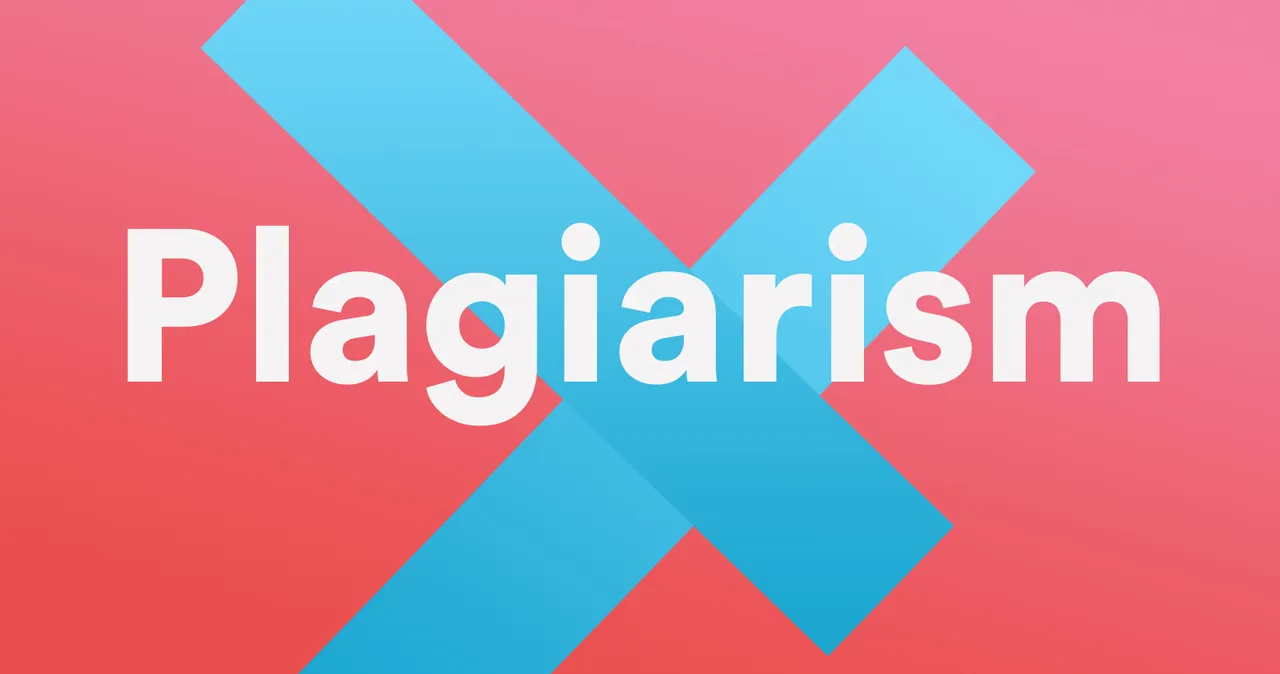 IMAGE SOURCE: GOOGLE.COM
IMAGE SOURCE: GOOGLE.COM
What is plagiarism
Plagarism is the act of taking and making use of content that does not belong to you without giving credit to the content creator or source. Enabling people to think that content belongs to you.
Google defines it as:
the practice of taking someone else's work or ideas and passing them off as one's own.
Plagarism types
According to my research we have four types of plagiarism which are:
1. Direct Plagiarism:
Most commonly, the crime of plagiarism involves adopting parts from the writing of another writer without proper mention of the source. Often the person copying from the text does not change even a single word. The plagiarist can also change parts of sentences or replace some of the words with his/her own. However, it also comes under the crime of plagiarism.
Among the different forms of plagiarism, direct plagiarism is the most harmful one. When the plagiarist copies and paste the text from someone else’s work and neglects to cite the source or remove quotation marks, then it is direct plagiarism.
The identical copying or cloning of a text is a severe offense. This duplicate content falls under the category of deliberately plagiarised content. It is unethical, and the writer of the original content can take disciplinary actions against the plagiarist.
2. Mosaic Plagiarism:
There is another type of plagiarism which is unintentional. In this case, the plagiarist may have mentioned the source of the content he has referred to. But, if he/she does not acknowledge the quoted part or put them under the quotation marks correctly, then the writer commits the crime of plagiarism.
Whether intended or unintended, plagiarism is a serious crime as it ensures writing to be the property of a writer.
3. Self-Plagiarism:
Self-plagiarism is one of the common types of plagiarism, where high school students copy and paste part of their previously submitted academic paper. If the student submits the same paper for two different class projects without asking the concerned teacher, then that is considered as self-plagiarism.
Though self-plagiarism does not often end with serious legal action, that can affect the presentation for academic papers, research papers.
4. Accidental Plagiarism:
Another common form of plagiarism involves accidental plagiarism. When the plagiarist misquotes the phrases or parts of the text he/she has taken from the source material or does not cite the source even or adequately or cites a wrong source, they that is considered as plagiarism.
How we can avoid it?
To avoid plagiarism you need to have always give credits to wherever or whoever you took contents from and always use quotes and citation to make out contents that are not yours.
How we can check for plagiarism
We can always check contents after writing via SMALL SEO PLAGIARISM CHECKER to confirm if any part of the content is been listed somewhere else, there are other plagiarism checkers but I use SmallSeotool to check mine as they are very trust worthy.
70% Of this post is sourced from:
copyleaks
SEE YOU NEXT TIME.
